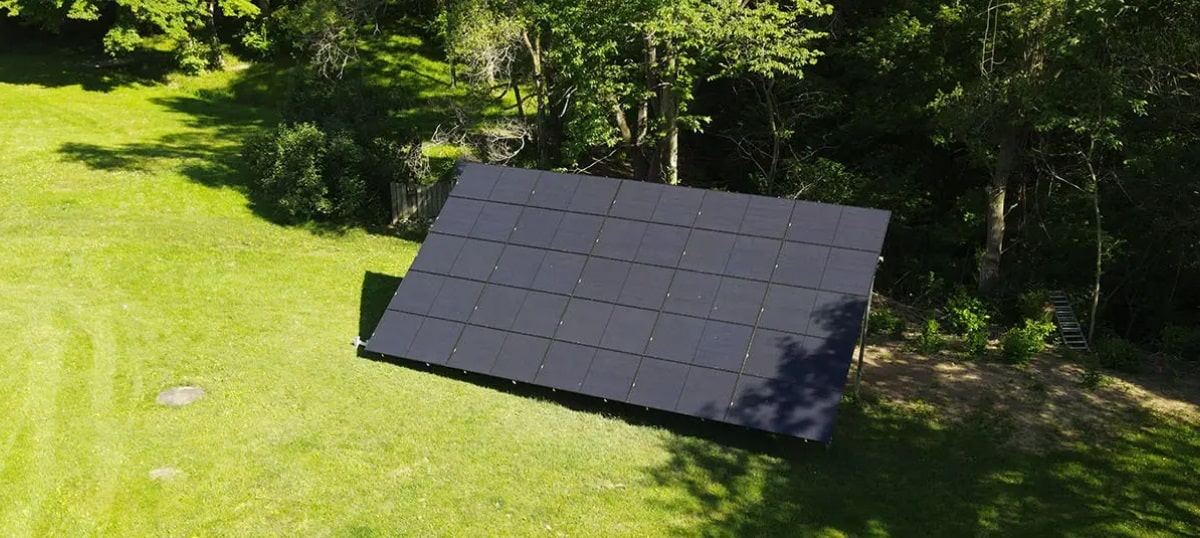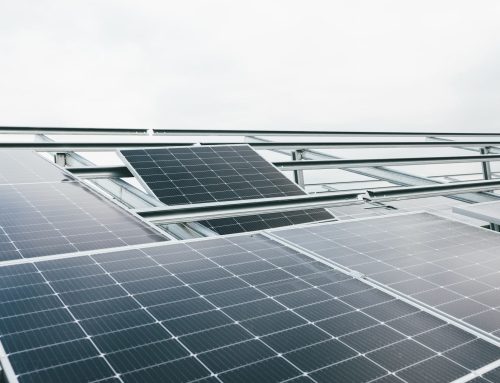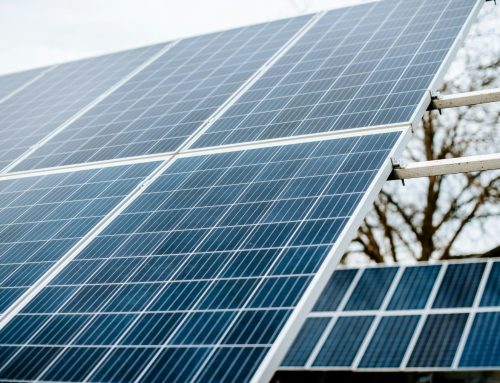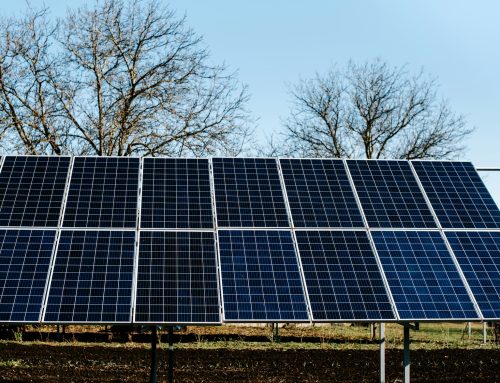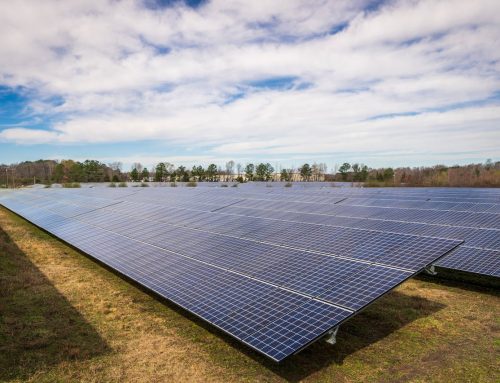Most solar panels are associated with rooftops… but that’s not the only way to transform your energy production, slash your energy bills, and upgrade your home.
Whether your roof is highly shaded, not made of suitable materials, or difficult to access, there are other options.
Ground-mounted panels can help drive energy production and may be right for your Adelaide home or business as an alternative to the more commonly seen rooftop installations.
But like any technology, they come with their own set of advantages and disadvantages.
In this article, we’ll help you make an informed decision by covering:
- A brief overview of ground-mounted panels
- Advantages and challenges of ground-mounted panels
- Comparison of ground-mounted vs. rooftop panels
Whether you’re a homeowner looking to reduce your carbon footprint or a business aiming to cut energy costs, the decision to go for ground-mounted panels is significant.
So, whether you’re contemplating the switch to renewable energy or simply curious about your options, read on for a comprehensive guide about the pros and cons of ground-mounted solar panels in this vibrant Australian city.
ENERGY BUSTER TIPS:
|
Ground-Mounted Panels Overview
They are an innovative solution for capturing solar energy, designed for installation directly on the ground rather than on a building’s roof.
This approach harnesses the same powerful sunlight that Adelaide is renowned for but offers a different set of logistics, aesthetics, and installation requirements.
Ground-mounted systems can be installed in a variety of sizes, from small, residential setups to large-scale commercial projects, making them a versatile option for a wide range of energy needs.
One of the key features is their ability to be positioned and angled precisely for optimal sun exposure throughout the year.
Unlike rooftop panels, which are limited by the orientation and angle of the roof, ground-mounted panels can be adjusted to face directly towards the sun at the correct angle, maximising energy production.
Ground-mounted systems are typically divided into two categories:
- Standard ground mounts which use metal framing to hold the panels at a fixed angle
- Pole mounts elevate panels higher off the ground and can include tracking systems.
Tracking systems allow the panels to move with the sun throughout the day, further increasing efficiency by capturing more sunlight.
The installation involves securing a suitable piece of land, preparing the site, and installing the necessary mounting hardware and solar panels.
This process can be more complex and potentially more costly than rooftop installations due to the need for ground preparation, including possible landscaping and foundation work.
However, for properties in Adelaide with limited roof space, shading issues, or unsuitable roof orientations, ground-mounted panels offers an effective alternative to ensure maximum energy capture.
| Advantages of Ground-Mounted Solar Panels | Challenges of Ground-Mounted Solar Panels |
|---|---|
| Optimal Orientation and Tilt | Land Requirements |
| Easy Access for Maintenance | Higher Initial Installation Costs |
| No Roof Space Required | Permitting and Regulation |
| Expandability | Visual Impact |
| Increased Efficiency with Tracking Systems | Potential for Damage |
| Avoidance of Structural Issues | Efficiency Loss Due to Shading |
Advantages of Ground-Mounted Solar Panels
Optimal Orientation and Tilt
One of the standout benefits is the ability to position them in the perfect orientation and tilt towards the sun. This is crucial for maximising energy production.
Data suggests that panels aligned with the correct orientation and tilt can produce up to 20-25% more energy compared to fixed rooftop panels that do not align perfectly with the sun’s path.
Easy Access for Maintenance
Ground-mounted systems are far more accessible for maintenance and cleaning than rooftop installations. In Adelaide’s climate, solar panels can accumulate dirt and debris, which can affect their efficiency.
Being able to easily reach your panels without the need for ladders or safety equipment makes it simpler and safer to keep them in optimal condition, ensuring they operate at peak efficiency.
No Roof Space Required
For properties in Adelaide without suitable roof space, or where the roof is shaded or oriented away from the sun, ground-mounted solar panels offer a viable alternative.
This is particularly relevant for historic homes with delicate roofing materials or buildings with small or complex roof designs. Ground-mounted panels bypass these limitations, making renewable power accessible to more people.
Expandability
If your energy needs increase, it’s relatively straightforward to add more panels to a ground-mounted system.
This flexibility is ideal for businesses in Adelaide that anticipate growth or for families whose energy consumption may rise over time. The ability to expand your system ensures that your solar installation can evolve with your changing energy requirements.
Increased Efficiency with Tracking Systems
They can be equipped with tracking systems that follow the sun’s movement across the sky.
This technology can significantly boost energy production—by as much as 25-35% in some cases—compared to stationary rooftop panels.
Although tracking systems represent an additional upfront investment, the increased energy output can lead to faster payback periods and greater long-term savings on electricity bills.
Avoidance of Structural Issues
Installing panels on the ground eliminates the risk of damaging the roof or encountering structural issues that can come with rooftop installations.
This is particularly beneficial for older homes in Adelaide that may not be able to support the weight of a solar array.
By opting for a ground-mounted system, homeowners can enjoy the benefits of renewable power without compromising the integrity of their home’s structure.
Potential Challenges of Ground-Mounted Solar Panels
Land Requirements
One of the primary considerations for ground-mounted installations is the need for sufficient land. For homeowners or businesses with limited outdoor space, dedicating a portion of their land to solar panels might not be feasible, especially if it competes with other land uses such as gardening, recreation, or landscaping.
Higher Initial Installation Costs
Ground-mounted systems often entail higher upfront costs compared to rooftop installations.
The need for additional materials, such as concrete foundations or mounting frames, and the potential for more complex site preparation, including excavation and landscaping, can increase initial investment.
While the long-term energy savings can offset these costs, the upfront financial requirement can be a barrier for some Adelaide residents considering renewable energy.
Permitting and Regulation
The installation may face stricter permitting and regulatory hurdles than rooftop systems.
Local zoning laws, environmental regulations, and visual impact assessments can add layers of complexity to the installation process.
Navigating these requirements can result in delays and additional costs, making the installation process more cumbersome for property owners.
Visual Impact
For some, the aesthetic impact of ground-mounted solar panels is a significant concern. Unlike rooftop panels that can blend into the architecture of a building, ground-mounted systems can be more visible and potentially alter the appearance of a property.
Potential for Damage
They are more susceptible to damage from environmental factors such as flooding, animals, or vandalism due to their accessibility and proximity to the ground.
This risk may require additional protective measures or insurance coverage, adding to the overall cost and maintenance considerations of the system.
Efficiency Loss Due to Shading
Although ground-mounted panels can be optimally positioned for sun exposure, they are still subject to shading issues from nearby trees, buildings, or other structures.
In some cases, the chosen installation site may not offer the unobstructed sun exposure necessary for maximum efficiency, particularly in densely built-up areas of Adelaide.
Ground-Mounted Solar Panels vs. Rooftop Panels
| Ground-Mounted Solar Panels | Rooftop Panels |
|---|---|
| Installation Flexibility and Location | Limited by building structure and orientation |
| Ease of Maintenance and Expansion | Accessibility for maintenance and scalability |
| Aesthetic Impact and Property Requirements | Minimal visual impact; blends with existing structure |
| Initial Costs and Long-term Efficiency | Higher initial costs; potentially greater efficiency |
| Regulatory and Permitting Considerations | Fewer regulatory hurdles; streamlined approval processes |
Installation Flexibility and Location
Unlike rooftop panels, which are confined to the structure and orientation of the building, ground-mounted panels offer unparalleled flexibility in placement. This allows for optimal orientation towards the sun, maximising energy production.
In contrast, rooftop panels are limited by the existing roof’s angle and direction, which may not always be ideal for solar exposure.
Ease of Maintenance and Expansion
Ground-mounted systems are more accessible for maintenance, cleaning, and expansion.
Adding panels to a ground-mounted system is generally more straightforward, providing a scalable solution that can grow with the user’s energy needs.
Rooftop systems, while expandable, are often constrained by the available roof space and structural considerations.
Aesthetic Impact and Property Requirements
Rooftop panels have a minimal visual impact, blending into the building’s existing structure. This can be a significant advantage for property owners concerned about the aesthetic appearance of their homes or businesses.
In contrast, ground-mounted panels may be more visible, requiring careful consideration of the visual impact on the property. However, this visibility can be managed through strategic placement and landscaping efforts.
10 Creative Solar Panel Mounting Ideas
Initial Costs and Long-term Efficiency
They typically involve higher initial installation costs due to the need for ground preparation and mounting structures.
However, their ability to be optimally positioned can result in higher efficiency and greater electricity generation over time, potentially offsetting the initial investment faster than rooftop installations in some cases.
Regulatory and Permitting Considerations
Rooftop installations are generally subject to fewer regulatory hurdles and may benefit from streamlined approval processes.
Ground-mounted installations, on the other hand, might face more stringent zoning and permitting requirements, particularly in urban areas of Adelaide where land use regulations are more complex.
Ready to Embrace Solar Energy? The Team at Energy Buster Can Help
Whether you’re leaning towards ground-mounted solar panels or exploring rooftop options, making the right choice can seem daunting.
That’s where Energy Buster comes in. Our team of experts is dedicated to helping you navigate the world of renewable energy, ensuring you find the perfect fit for your property and energy needs.
- Personalised Advice: Our specialists are here to provide tailored advice, helping you weigh the pros and cons of ground-mounted versus rooftop panels in the context of your specific situation.
- Custom Quotes: Ready to take the next step? We’ll consider your energy needs, property characteristics, and budget to offer the most cost-effective and efficient solution for you.
- Expert Installation: With Energy Buster, you’re not just getting solar panels; you’re gaining a partner in renewable energy. Our team ensures a smooth and hassle-free installation process, from initial consultation to switching on your new solar system.
Contact Energy Buster today to explore your options and get a quote.
Let us help you harness the power of the sun, reducing your carbon footprint and energy bills in the process.

